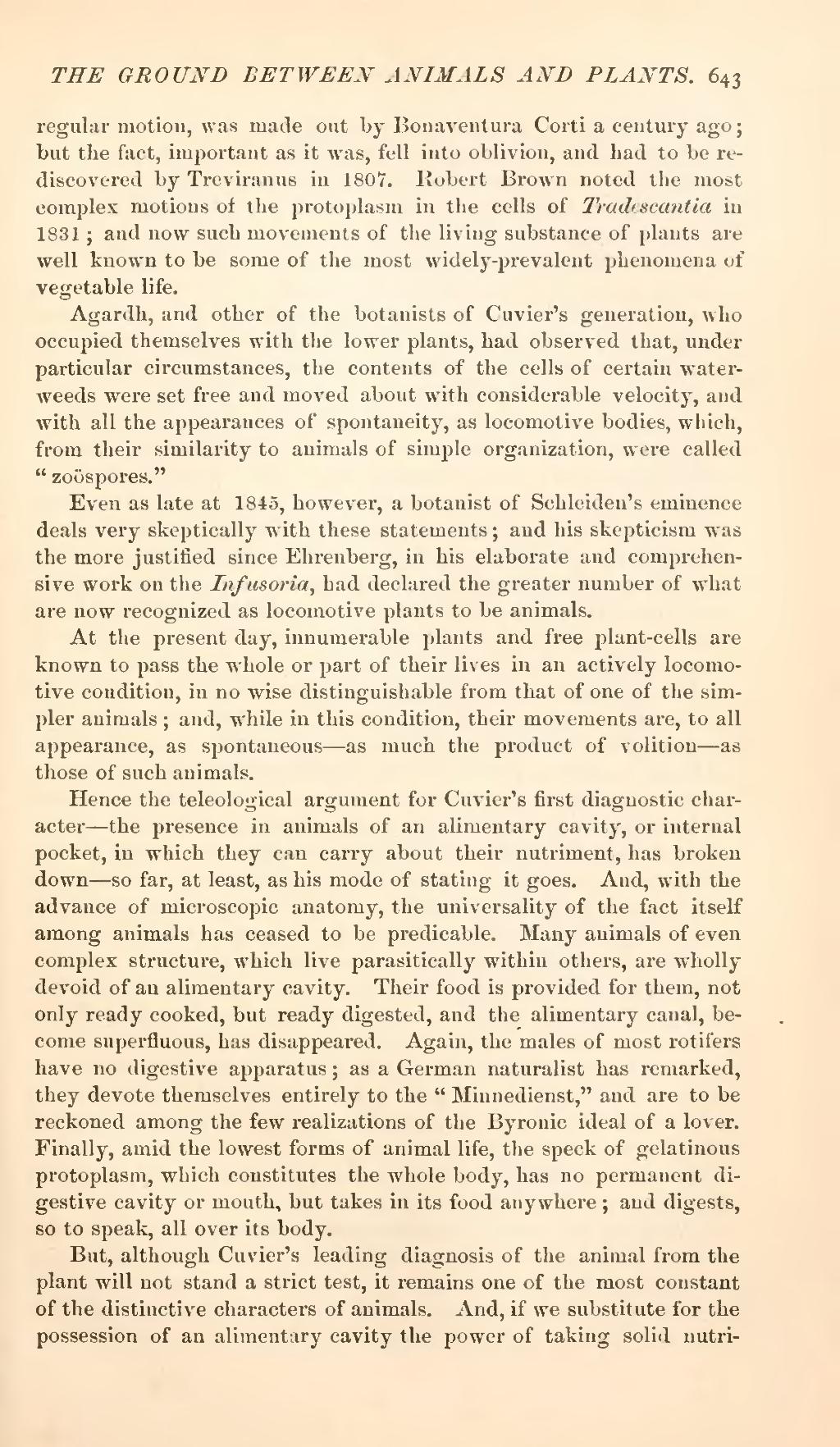regular motion, was made out by Bonaventura Corti a century ago; but the fact, important as it was, fell into oblivion, and had to be rediscovered by Treviranus in 1807. Robert Brown noted the most complex motions of the protoplasm in the cells of Tradescantia in 1831; and now such movements of the living substance of plants are well known to be some of the most widely-prevalent phenomena of vegetable life.
Agardh, and other of the botanists of Cuvier's generation, who occupied themselves with the lower plants, had observed that, under particular circumstances, the contents of the cells of certain waterweeds were set free and moved about with considerable velocity, and with all the appearances of spontaneity, as locomotive bodies, which, from their similarity to animals of simple organization, were called "zoöspores."
Even as late at 1845, however, a botanist of Schleiden's eminence deals very skeptically with these statements; and his skepticism was the more justified since Ehrenberg, in his elaborate and comprehensive work on the Infusoria, had declared the greater number of what are now recognized as locomotive plants to be animals.
At the present day, innumerable plants and free plant-cells are known to pass the whole or part of their lives in an actively locomotive condition, in no wise distinguishable from that of one of the simpler animals; and, while in this condition, their movements are, to all appearance, as spontaneous—as much the product of volition—as those of such animals.
Hence the teleological argument for Cuvier's first diagnostic character—the presence in animals of an alimentary cavity, or internal pocket, in which they can carry about their nutriment, has broken down—so far, at least, as his mode of stating it goes. And, with the advance of microscopic anatomy, the universality of the fact itself among animals has ceased to be predicable. Many animals of even complex structure, which live parasitically within others, are wholly devoid of an alimentary cavity. Their food is provided for them, not only ready cooked, but ready digested, and the alimentary canal, become superfluous, has disappeared. Again, the males of most rotifers have no digestive apparatus; as a German naturalist has remarked, they devote themselves entirely to the "Minnedienst," and are to be reckoned among the few realizations of the Byronic ideal of a lover. Finally, amid the lowest forms of animal life, the speck of gelatinous protoplasm, which constitutes the whole body, has no permanent digestive cavity or mouth, but takes in its food anywhere; and digests, so to speak, all over its body.
But, although Cuvier's leading diagnosis of the animal from the plant will not stand a strict test, it remains one of the most constant of the distinctive characters of animals. And, if we substitute for the possession of an alimentary cavity the power of taking solid nutri-
